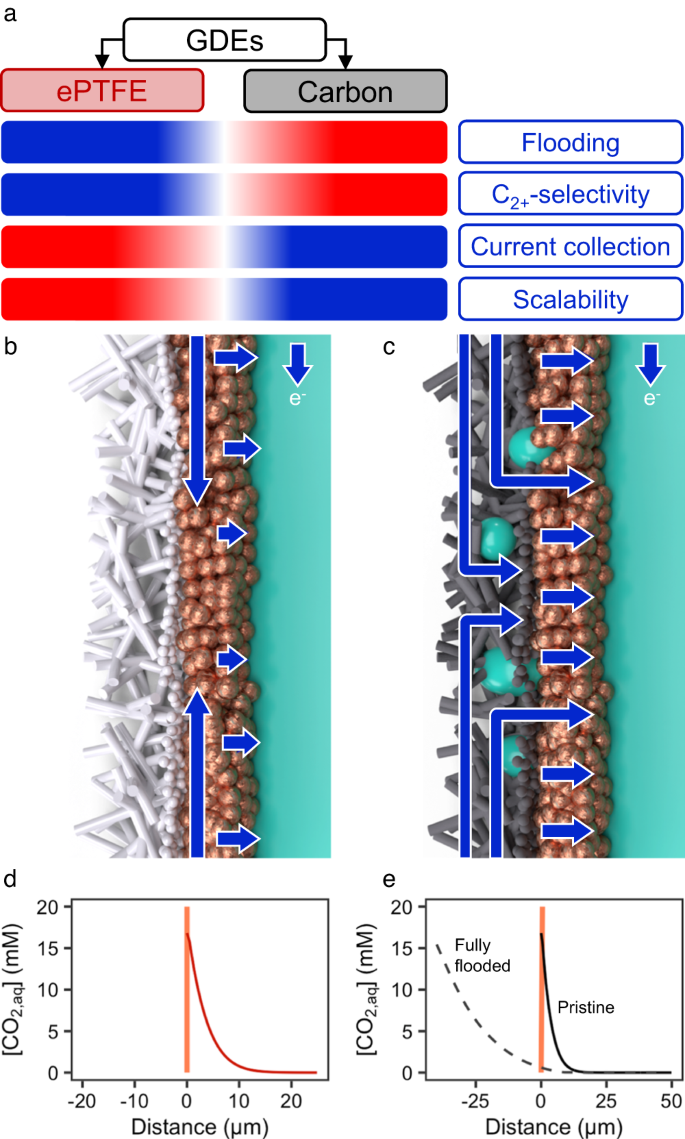2023-11-15 オランダ・デルフト工科大学(TUDelft)
◆CO2電解は炭素中立的な複雑な分子生成の技術であり、化学工業において化石燃料の使用を減少させ、水とCO2だけを使用することで環境への貢献が期待されます。Van Montfort氏は、「技術には制約があるが、数十年後には産業規模での実用化が可能になる可能性がある」と述べました。
<関連情報>
- https://www.tudelft.nl/en/2023/tnw/more-efficient-electrodes-for-co2-recycling
- https://www.nature.com/articles/s41467-023-42348-6
超疎水性電極上でのCO2電気分解時の電流密度分布を改善する非浸潤性集電体 Non-invasive current collectors for improved current-density distribution during CO2 electrolysis on super-hydrophobic electrodes
Hugo-Pieter Iglesias van Montfort,Mengran Li,Erdem Irtem,Maryam Abdinejad,Yuming Wu,Santosh K. Pal,Mark Sassenburg,Davide Ripepi,Siddhartha Subramanian,Jasper Biemolt,Thomas E. Rufford & Thomas Burdyny
Nature Communications Published:18 October 2023
DOI:https://doi.org/10.1038/s41467-023-42348-6

Abstract
Electrochemical reduction of CO2 presents an attractive way to store renewable energy in chemical bonds in a potentially carbon-neutral way. However, the available electrolyzers suffer from intrinsic problems, like flooding and salt accumulation, that must be overcome to industrialize the technology. To mitigate flooding and salt precipitation issues, researchers have used super-hydrophobic electrodes based on either expanded polytetrafluoroethylene (ePTFE) gas-diffusion layers (GDL’s), or carbon-based GDL’s with added PTFE. While the PTFE backbone is highly resistant to flooding, the non-conductive nature of PTFE means that without additional current collection the catalyst layer itself is responsible for electron-dispersion, which penalizes system efficiency and stability. In this work, we present operando results that illustrate that the current distribution and electrical potential distribution is far from a uniform distribution in thin catalyst layers (~50 nm) deposited onto ePTFE GDL’s. We then compare the effects of thicker catalyst layers (~500 nm) and a newly developed non-invasive current collector (NICC). The NICC can maintain more uniform current distributions with 10-fold thinner catalyst layers while improving stability towards ethylene (≥ 30%) by approximately two-fold.



